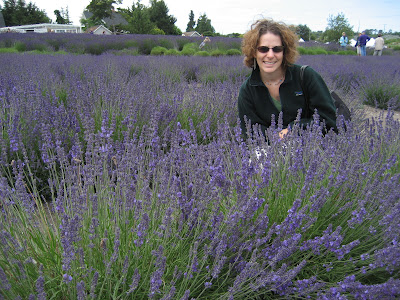One of the great things about entertaining friends and family from home is that I get the chance to rediscover my love for this country. I happily pull out my white sneakers (or, as we say in the Midwest, "tennies") and my Rough Guide and hit the sites like a tourist. We visited the usual suspects--Leuven, Brussels, Bruges--and a couple of new places for me, including Ghent, Ypres, and Paris. And my parents, bless them, cheerfully endured my dragging them across miles on train tracks and cobblestone streets. And with the promise of a coffee and biscuit or new Belgian beer at every street-corner cafe, who could complain?
 My intention is to post a little something about each destination, but let me start with our first adventure: Ghent. Ghent is a bit of a forgotten city in Flanders. It lies half-way between Brussels and Bruges and is usually a place to pass through on your way to someplace more exciting. Like Bruges, it is a city of canals and churches, and though not as picturesque as its northern neighbor, it is an immediately likable place. As the Rough Guide states: "If you're put off by the tourists and tweeness of Bruges, this is the place to decamp."
My intention is to post a little something about each destination, but let me start with our first adventure: Ghent. Ghent is a bit of a forgotten city in Flanders. It lies half-way between Brussels and Bruges and is usually a place to pass through on your way to someplace more exciting. Like Bruges, it is a city of canals and churches, and though not as picturesque as its northern neighbor, it is an immediately likable place. As the Rough Guide states: "If you're put off by the tourists and tweeness of Bruges, this is the place to decamp."
Ghent's star is Sint-Baafskathedraal, a marvelously Gothic building that was 250 years in the making and was completed only two years before the Reformation wars threatened to bring it down again. While Sint-Baafs itself is rather dark and unremarkable as far as Belgian cathedrals go, its greatest treasure is the famous Adoration of the Mystic Lamb by Jan van Eyck. It is undeniably one of the most famous Flemish paintings of the 15th century, both for its beauty and its realism. It has a checkered history: the Calvinists tried to destroy it, Philip II of Spain tried to buy it, Emperor Joseph II tried to censor it (he replaced the nude Adam and Eve on one of the cover paintings with a clothed version in 1784), and the Nazis stole it and hid it in an Austrian salt mine until it was discovered by American soldiers in 1945. And, unfortunately for us, we didn't get to see it because the guy running the ticket counter stepped out for coffee. *sigh*


Sint-Baafs is only one of three churches that lie within 200 meters of each other. It is remarkable that one can stand in the middle of the center square and see three huge churches, all built at roughly the same time, and each vying for "top dog" in Ghent's religious community. Sint-Niklaaskerk dominates the center of the main square, and Sint-Michielskerk rests alongside the canal. It's hard to say if this kind of close proximity is the result of an "Oh yeah, well I can build an even BETTER church . . .", but it is fun to speculate.
 Ghent's other great draw is the deliciously-sinister Gravensteen castle. It was built by the Counts of Flanders in the 12th-century, as much to protect Ghent's citizens as to intimidate them. Having missed the tour of the inside by a mere five minutes (it wasn't our day), we contented ourselves with a stroll around its grounds. As one of Flanders' only "urban" castles, it has survived the centuries to provide us with a more secular view of medieval times.
Ghent's other great draw is the deliciously-sinister Gravensteen castle. It was built by the Counts of Flanders in the 12th-century, as much to protect Ghent's citizens as to intimidate them. Having missed the tour of the inside by a mere five minutes (it wasn't our day), we contented ourselves with a stroll around its grounds. As one of Flanders' only "urban" castles, it has survived the centuries to provide us with a more secular view of medieval times.

No comments:
Post a Comment